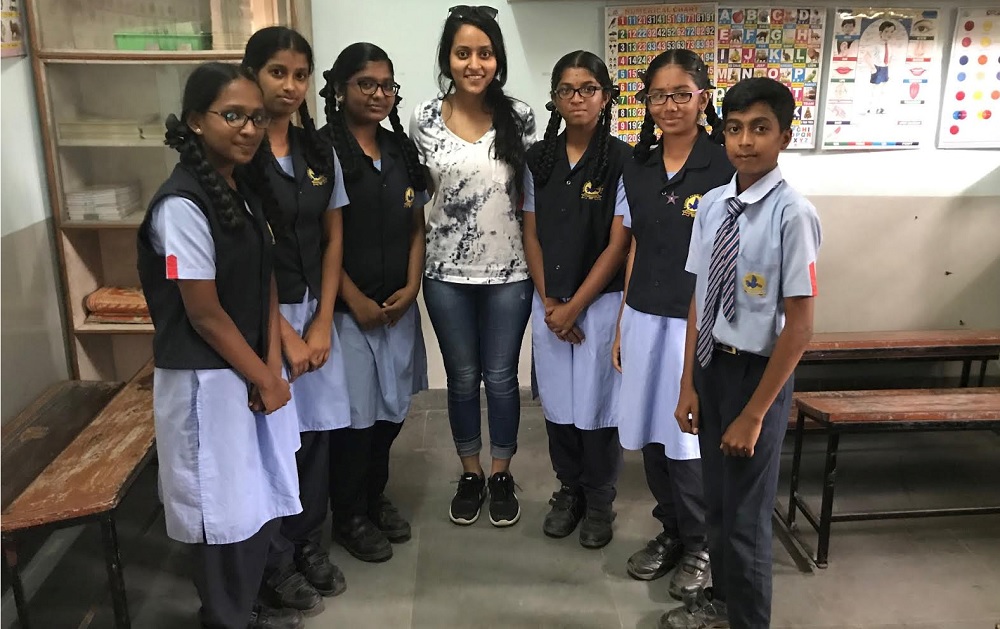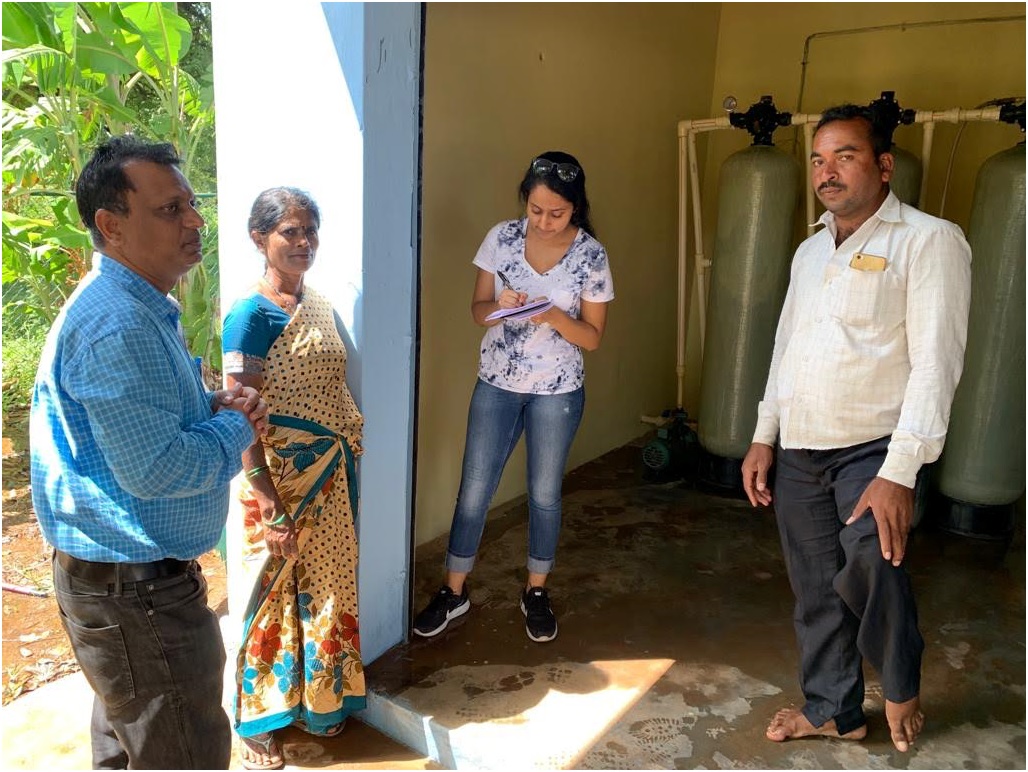
Easy accessibility to clean water can become a game-changer for women and girls in villages, writes High school senior Esha Mittal, who spent the summer in India.
By Esha Mittal
During the celebration of India’s 73rd Independence Day, Prime Minister Narendra Modi took the stage to announce the launch of the Jal Jeevan Mission (Water Life Mission), a 3.5-trillion rupee (nearly $50 billion) government initiative to provide clean drinking water to the large parts of the country that currently lack access, particularly rural regions.
He called for a grassroots people movement for water conservation as the threat of complete water-depletion looms across numerous states. Watching the prime minister’s speech and hearing his plans for the program could not have resonated more with me. Just a couple weeks ago, I was in India experiencing the situation of water first-hand, as I dedicated my summer to learning more about the realities of access to clean water guided by Safe Water Network, an organization enabling access to safe and affordable water.
Doddaballapura, a village on the outskirts of Bangalore, is a region of rich agriculture and a sizable silk saree business. It is only an hour away from the mega-city of Bangalore, yet the situation of clean drinking water is drastically different. For years, the villagers have used hand pumps to access groundwater, if and when contaminated, can lead to costly illnesses. Women, particularly, are affected by the water situation, as it is their responsibility to collect water for the household, no matter how strenuous, or time-consuming the process.
Globally, women spend 200 million hours each day collecting water, limiting their income opportunities as well as time for social and community activities. With a continuing growth in water scarcity across India, it is imperative that an innovative and sustainable solution is implemented soon.
In Dodaballapura, such a solution does exist: a water kiosk.
Villagers can purchase 20 liters of safe, purified water for only 5 rupees (approximately 7 cents in U.S. currency) at Veerapura, the water kiosk installed by the state government. They simply need to insert a coin or swipe a smart card to gain easy access to their most essential need. Regardless of economic status, the price of clean water is affordable for everyone. The reverse osmosis filtration system of the water kiosk plant is remarkable, beating the quality of many home filtration systems and positively impacting the lives of the villagers in immeasurable ways.
ALSO READ: Safe Water Network calls for collaborative effort to tackle water problem (October 27, 2018)
With fewer illnesses, the villagers miss fewer days of work, allowing them to be more productive
and maximize their income while keeping the cost of medical bills low.
The most important change, however, has come in the lives of women. The people who came to collect water during my visits were both women and men. The arrival of the water kiosks has narrowed the gender disparity and shifted some of the responsibility off of the women to the men. This allows more opportunity and time for women and girls to attend school, make a living, and create a new future for themselves. Kirti, a newly married housewife, has the responsibility of taking care of her household of five. However, she does not let that stop her from pursuing further education and eventually earning an income. Easy accessibility to water has alleviated the situation and become a game-changer in the community.
Following my visit to the village, I traveled to the booming IT and research city of Bangalore. Despite developments in industry and infrastructure, access to clean water remains a challenge. The future of the world lies in the youngest generations, so I visited both a private school and government school to gain the perspective of kids similar to my age.
Despite the language barrier, I could see the enthusiasm in the government and private school children even from a single conversation with them. In an attempt to understand their daily routines, I asked them about how they gained access to drinking water. Many of the private school students had water filtration systems in their homes but the government school children relied mostly on the city kiosks.
Just 10 years ago, many children were drinking water directly from the tap, unaware of the possible harmful effects. At most, they were filtering the water using a cloth; the extent to which this method actually purified the water is skeptical. Implementing water kiosks has improved the quality of their lives by helping them stay healthy as well as bringing awareness to the importance of drinking clean water. Recently, there have been new initiatives in schools as well, to both educate the children about the importance of drinking clean water and sanitation as well as provide the facilities for it.
When asked about whose responsibility it is to provide clean water in the future, the students were divided. Many of them believed it was the government, but many said instead that it would be their responsibility. One student talked about how even ordinary citizens can help alleviate the situation by simply being mindful of how they use water; they can turn off the water when brushing their teeth, they can limit the amount they wash their car, and they can remember to turn off the motor of the water tank on time. If young people can understand the importance of clean water conservation, they can be the ones to better the future.
Preserving water for future generations and ensuring that each citizen will have access to clean water is a collective effort. We need all entities to come together; technical specialists to create innovative solutions, the government to frame appropriate policies, businesses to give financial support, and a sense of ownership and responsibility from the public. From what I learned by visiting the village and the schools, there is hope for the realities to change.
Esha Mittal is a high school senior with a passion for social change. She is particularly interested in issues that matter to the success of young girls in her demography.

Indian American Vivek Sankaran is the new President & CEO of food and drug chain Albertsons
Colleen Brinkmann: Creating food security, one relationship at a time
From Georgetown to Hyderabad: A journey of impact, service and smiling faces




1 Comment
A very informative and imperative article in which you have raised a current issue of water scarcity in India. Congratulations to you for a great initiative. God bless You.